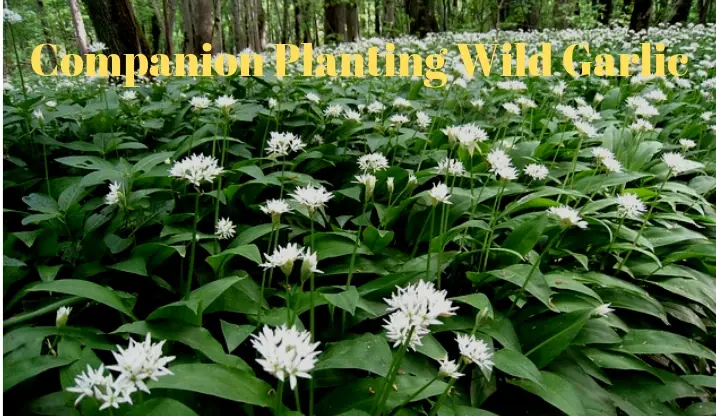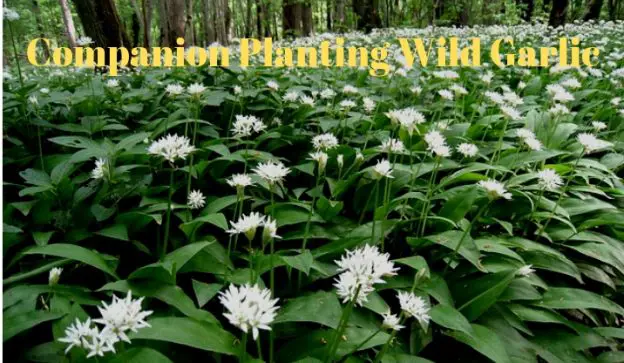Wild Garlic Companion Planting: The Ultimate Guide
Wild Garlic Companion Planting: The Ultimate Guide
Wild garlic (allium ursinum) is a hardy perennial that is native to Europe and Asia. It is a member of the onion family and has a strong garlicky smell. Wild garlic is often found growing wild in woodlands, hedgerows, and other shady areas.
Wild garlic is a versatile plant that can be used in a variety of ways. The leaves can be eaten fresh or cooked, and the flowers can be used to make a garlicky syrup or vinegar. Wild garlic is also a good source of vitamins A and C.
In addition to its culinary uses, wild garlic also has a number of medicinal properties. It has been used traditionally to treat a variety of ailments, including coughs, colds, and high blood pressure. Wild garlic is also an effective insect repellent.
One of the best things about wild garlic is that it is easy to grow. It prefers moist, shady conditions and can tolerate poor soil. Wild garlic can be propagated from seed or by dividing existing plants.
If you are thinking about growing wild garlic in your garden, companion planting is a great way to improve its growth and productivity. Some of the best companion plants for wild garlic include:
- Fruit trees: Wild garlic can help to protect fruit trees from pests and diseases.
- Cabbages: Wild garlic can repel cabbage loopers and other pests that can damage cabbages.
- Carrots: Wild garlic can improve the flavor of carrots.
- Kale: Wild garlic can help to protect kale from pests and diseases.
- Potatoes: Wild garlic can repel potato beetles and other pests that can damage potatoes.
- Roses: Wild garlic can help to repel pests that can damage roses.
- Yarrow: Yarrow can improve the growth and productivity of wild garlic.
When companion planting wild garlic, it is important to avoid planting it near alliums, such as onions, leeks, and chives. Alliums can compete with wild garlic for nutrients and water.
With a little planning, you can easily create a companion planting scheme that will help your wild garlic thrive. By planting it near the right companion plants, you can improve its growth, productivity, and resistance to pests and diseases.
Wild garlic is a versatile and hardy plant that can be grown in a variety of conditions. It is also a great companion plant for many other vegetables and herbs. Some of the best companion plants for wild garlic include:
- Tomatoes: Wild garlic helps to repel pests and diseases from tomatoes, and the two plants can also help to improve each other's flavor.
- Fruit trees: Wild garlic can help to improve the health and productivity of fruit trees by attracting beneficial insects and deterring pests.
- Potatoes: Wild garlic helps to deter the Colorado potato beetle, a major pest of potatoes.
- Cabbages: Wild garlic helps to repel cabbage moths and other pests that can damage cabbages.
- Broccoli: Wild garlic helps to improve the flavor of broccoli and can also help to deter pests.
If you are interested in learning more about wild garlic companion planting, I recommend visiting Gardenia Inspiration. This website provides a wealth of information on the topic, including a list of plants that are compatible with wild garlic, as well as tips on how to plant and care for these plants.
FAQ of wild garlic companion planting
Here are the 5 most frequently asked questions about wild garlic companion planting, along with some valuable insights and solutions:
- What are the benefits of companion planting with wild garlic?
Wild garlic is a beneficial plant to companion plant with because it has a number of properties that can help to improve the growth and health of other plants. For example, wild garlic can help to repel pests, attract beneficial insects, and improve soil fertility.
- What plants are good companions for wild garlic?
Some good companions for wild garlic include:
- Asparagus: Asparagus can help to improve the flavor of wild garlic.
- Carrots: Wild garlic can help to repel carrot fly.
- Cucumbers: Wild garlic can help to repel cucumber beetles.
- Lettuce: Wild garlic can help to repel aphids.
- Peas: Wild garlic can help to improve the nitrogen content of the soil, which is beneficial for peas.
- What plants should not be planted near wild garlic?
Some plants that should not be planted near wild garlic include:
- Onions: Onions and garlic are in the same family, and planting them too close together can stunt their growth.
- Tomatoes: Wild garlic can suppress the growth of tomatoes.
- Beans: Wild garlic can inhibit the nitrogen-fixing bacteria that beans need to grow.
- How far apart should wild garlic plants be planted?
Wild garlic plants should be planted about 6 inches apart. This will give them enough space to grow and thrive.
- When is the best time to plant wild garlic?
Wild garlic can be planted in the spring or fall. If you plant it in the spring, it will start to grow in the early summer and will flower in the late summer. If you plant it in the fall, it will start to grow in the early spring and will flower in the late spring.
Image of wild garlic companion planting
5 different images of "wild garlic companion planting" from Pinterest:
- Image 1: Wild garlic (Allium ursinum) growing in a bed with strawberries. Wild garlic is a good companion plant for strawberries because it helps to repel pests and diseases.

- Image 2: Wild garlic growing in a bed with carrots. Wild garlic helps to improve the flavor of carrots and also helps to deter carrot flies.

- Image 3: Wild garlic growing in a bed with chamomile. Chamomile helps to repel pests and diseases, and it also helps to improve the flavor of wild garlic.

- Image 4: Wild garlic growing in a bed with roses. Wild garlic helps to repel pests and diseases, and it also helps to improve the health of roses.
- Image 5: Wild garlic growing in a bed with other woodland wildflowers. Wild garlic is a native woodland wildflower, so it is a good companion plant for other woodland wildflowers.
Post a Comment for "Wild Garlic Companion Planting: The Ultimate Guide"